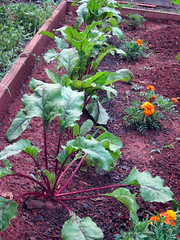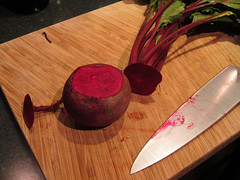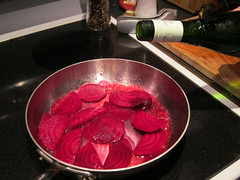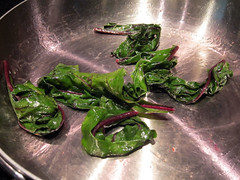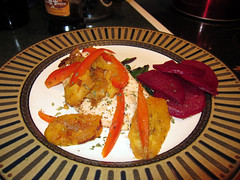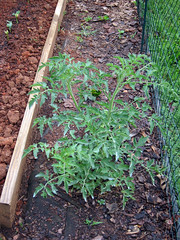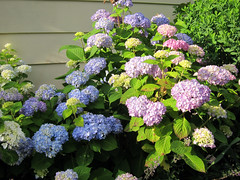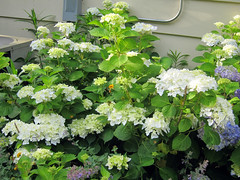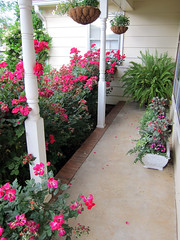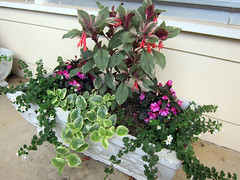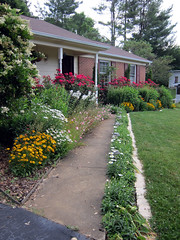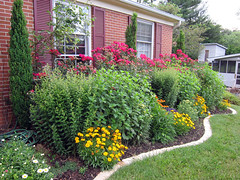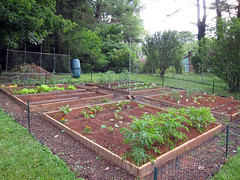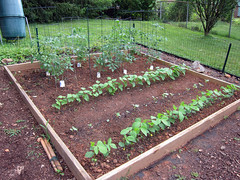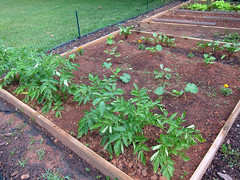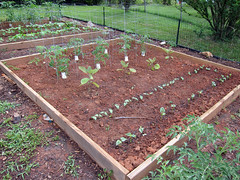First Squash of the Season
I had a lot of miscellaneous squash seed left-over from past gardening years that I decided to use up this year before adding to the collection. I ended up with 3 Crookneck Improved from Park's Seeds, and 2 Golden Dawn and 1 Raven Zucchini from Renee's Garden. I really like the Golden Dawn (pictured on the front row). Not only is the buttercup flavored fruit rich and nutty, but the upward curving leaves are easier to inspect for squash beetles than other varieties. This variety also seems to be able to pollinate itself from all female flowers. There are 5 fruit on each plant, and no male flowers. Most squash require male and female flowers to produce fruit.

We had a wonderful rain last night that helped ripen up the first of the Golden Dawn fruits. Summer squash is ready for harvest at 5 or 6 inches in length. Do not let the fruit grow much longer than this, or it will become tough and bland. Harvesting the fruit young and often will keep the plant producing for a longer period. Remember that squash plants are annuals, and their goal is to produce seed. Once they feel enough seed has been produced, they will die. It's your job to keep them from fulfilling their goal!
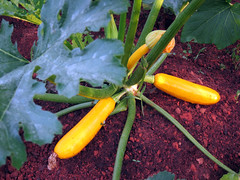
When harvesting, never twist or snap the fruit from the vine. Use a knife, sharp scissors or pruning sheers to make a clean cut leaving about 2" of stem attached to the fruit. This will help the squash stay fresh longer after removed from the vine.
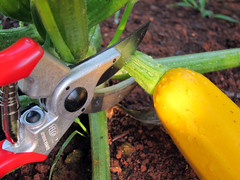
Squash will become exhausted in the heat of the Summer and start to die back. To keep the garden full of squash all season long, sow a second crop in large peat containers around the time the first crop starts producing fruit. By the time the first plants die back, the second crop will be ready to take their place in the garden.
Labels: squash, vegetables
